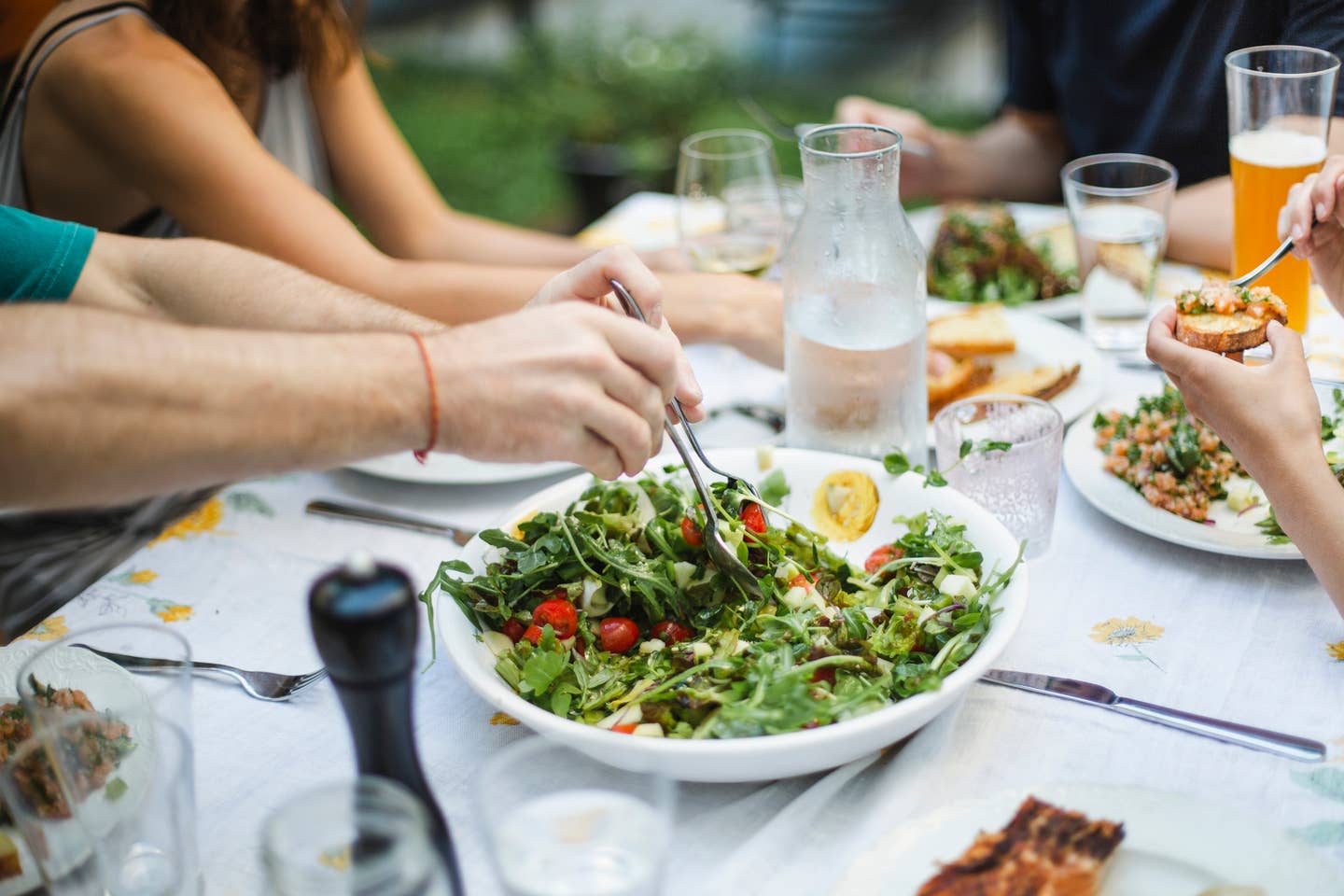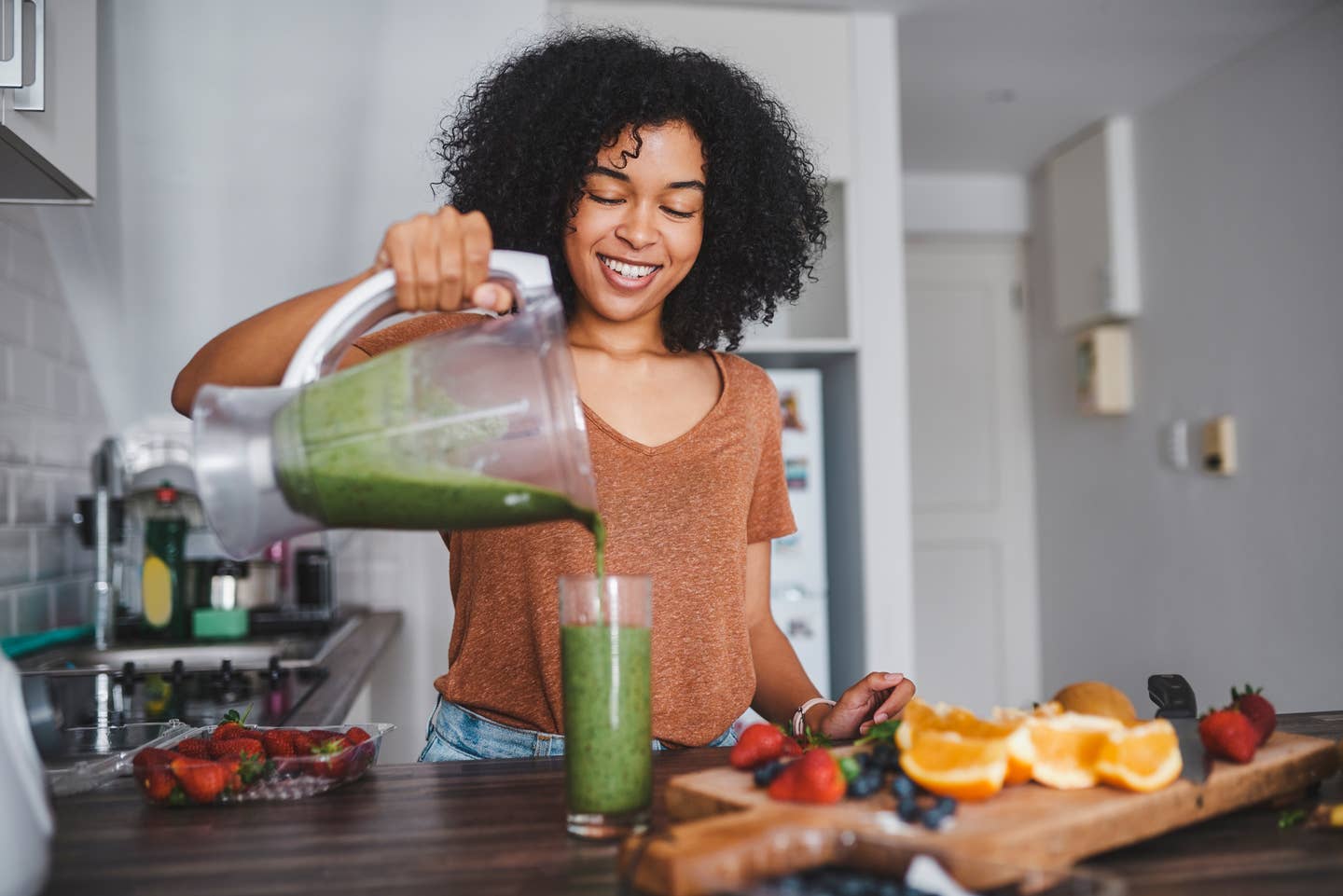
Here’s How To Know It’s Time To Go Plant-Based, According to RDs
From weight loss to saving the planet, there are many benefits of taking the plant-based plunge. For some of us, cute animal videos are all we need to decide to ditch meat and dairy for good, for others, inspiration to go plant-based doesn’t exactly come from a bunny vortex on the internet. So how do you know when it’s time to make the shift? Turns out, your body holds some telling clues that going plant-based may really help you out. Below, nutritionists break down signs that show you should consider embracing the plant-strong life.
And it goes without saying, but you should always talk with your doc or nutritionist before overhauling your diet, especially if you suffer from any medical conditions.
1. You suffer from an issue related to chronic inflammation.
Whether it’s inflammation of your digestive tract (like IBD) or skin (psoriasis) or otherwise, or diseases that are linked to bodily inflammation like type 2 diabetes, a whole foods, plant-based diet may help improve such health conditions — or even reverse them completely.
“If you experience chronic inflammation, transitioning to a vegan diet may help. A vegan diet is rich in fruits, vegetables, whole grains, legumes, and nuts and seeds, which all work to reduce inflammation,” says Allison Gregg, RDN, LD/N, Nutritional Consultant at MomLovesBest. “A study in the Complementary Therapies in Medicine found that 600 individuals who followed a vegan diet for three weeks significantly reduced C-reactive protein (CRP). CRP is a key marker for acute and chronic inflammation.” Pretty neat, and a reminder about the healing power of what we eat, huh?
2. You’re enduring chronic pain.
“Studies show that a plant-based diet is full of anti-inflammatory compounds provided through phytonutrients,” says Trista K. Best, MPH, RD, of Balance One Supplements. “If you experience chronic pain or inflammation a vegan diet may be beneficial in mitigating your symptoms.”
Carly James, Ph.D., MSc, in sport and exercise nutrition, and fitness instructor also points to an interesting study that found that following a whole-food, plant-based diet can alleviate the symptoms of osteoarthritis. “This may be because managing a person’s weight reduces the strain on their joints,” she says.
Anecdotally, there are also countless stories of people improving chronic pain from going vegan like this young New Yorker who treated his alopecia and his pain by eating a raw, vegan diet and this pro athlete who found that a vegan diet helped alleviate his sciatica pain.
3. You need to lose weight.
James speaks to the importance of going plant-based for weight loss and weight management: One study even found a vegan diet beat the American Heart Association diet for improving cardiovascular risk in obese, hypercholesterolemic children and their parents, with the low-fat, vegan diet helping on the weight loss front.
“Obesity is a major risk factor in diabetes, which is a serious disorder with significant implications. This means that following a vegan diet can lower your risk of diabetes,” she adds, citing research that a low-fat, vegan diet may help more in the treatment of type 2 diabetes than a conventional vegan diet.
4. Your sleep quality is poor.
Millions of Americans suffer from sleep issues, and embracing a plant-based diet (along with solid sleep hygiene practices like these), may help in the snoozing department.
“A vegan diet is beneficial for sleep if you experience difficulty with sleep. A study in the Journal of Clinical Sleep Medicine found that a diet low in fiber and high in saturated fat and sugar is associated with lighter, less restorative sleep with more disruptions throughout the night,” comments Gregg. “A vegan diet is comprised of plant-based foods that are high in fiber and low in saturated fat,” she continues, adding that improving your dietary patterns through transitioning to a vegan diet rich in nutrient-dense foods could improve your sleep quality.
5. You’d love to improve your mood.
Don’t we all, these days? Yes, yes, yes! Well, there’s a growing body of evidence linking a plant-based diet and positive changes in brain chemistry and even the mood-boosting properties of certain foods and nutrients.
“What you eat does impact your mood. A study in the Nutrition Journal found that restricting meat, fish, and chicken intake improved multiple domains of short-term mood in omnivores,” offers Gregg. “This is because omnivorous diets are high in arachidonic acid compared to vegan diets. High intakes of arachidonic acid promote changes in the brain that disturb mood. If you want to improve your mood throughout the day, a vegan diet may help,” she continues.
6. You’d like to improve your skin health.
“Foods consumed on a plant-based diet can also help control acne breakouts in both severity and longevity,” comments Best. “Plants are naturally rich in fiber which helps rid toxins from the body by clinging to them and eliminating them from the body naturally. Less toxins in the body mean less adverse health reactions, including acne.”
For more ongoing plant-based and your complexion, check out how eating a vegan diet can clear acne and brighten skin.
You may think iron is synonymous with meat, and while animal protein certainly has it, that doesn’t mean you can’t get enough iron if you eat a mainly plant-based diet. In fact, you can, if you know the right foods to choose and how to pair them. The daily recommendation from the National Institutes of Health (NIH) for iron intake is 18 milligrams (mg), but not all iron sources are created equal. Here’s what plant-based eaters need to know about iron and which iron-rich foods are best to help reap the benefits.
1. White Mushrooms
1 cup cooked = 3 mg iron (17% daily value (DV))\There are many reasons to eat mushrooms on the regular, but their meaty texture (try a Portobello cap as a meat replacement for a burger!) and ample protein are two of the highlights. Add them to your stir-fry, tacos, or even instead of meat in a faux Bolognese sauce.
2. Lentils
1/2 cup = 3 mg iron (17% DV)You don’t need to eat a huge serving of lentils to get a hearty dose of iron. Just a half-cup provides close to 20% of the iron you need in a day. Just like mushrooms, lentils have a meaty texture that works well in burgers, tacos, or grain bowls.
3. Potatoes
1 medium potato = 2 mg iron (11% DV)The poor potato has gotten such a bad rap. Fear of this carb-rich spud is unwarranted because it’s actually an affordable and delicious source of iron and potassium. So go ahead and have that hash, baked potato, or potato soup and leave the skin on for some added fiber.
4. Cashews
1 ounce = 2 mg iron (11% DV)Most nuts contain iron, but cashews are a standout because they have less fat than some of the other nuts. One ounce of cashews (about 16 to 18 nuts) has 160 calories, 5 grams of protein, and 13 grams of fat. Add a handful of cashews to smoothies, soups, or sauces for some extra creaminess.
5. Tofu
½ cup = 3 mg (15% DV)Not only does tofu have plenty of protein and calcium, but it’s also a good source of iron. It’s very versatile and takes on the flavor of any sauce or marinade, making it a great meat substitute.Keep in mind that you can easily get the iron you need from a plant-based diet.
More From The Beet






